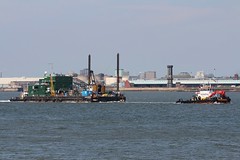
Read An Opinion On:
By Michael Smallet
Forbidden City or the palace of the imperial dynasty is conveniently located in the heart of the capital of China, close to all major Beijing hotels, and during five centuries it was solely intended for residence of the rulers of China. From here 24 Emperors of the Ming (1368-1644) and Qing (1644-1911) dynasties ruled the country. From 1911 till his abdication in 1924 the last emperor of China lived here in a tiny yard, but some buildings have been converted into a museum and opened already in 1914.
Being the largest palace complex in the world, the Forbidden City is listed by UNESCO as a World Heritage Site.
The start of construction dates back to around 15th century. The complex includes 800 buildings and 9999 rooms, occupying an area of 72 hectares. The Forbidden City was built in 1406-1420 respectively. Over one million construction workers and 100,000 other craftsmen such as stone carvers, wood carvers, painting artisans etc. were used by the Emperor at the site.
The palace is a vivid manifestation of the Chinese tradition. The name Forbidden City was given due to the fact that only the Emperor and his family could live here, whereas all the others, like courtiers, officials and ordinary people lived outside this great city, and no one could enter the palace without the permission of the governor. The palace is surrounded by an 8-meter high wall and a deep ditch. The prohibition to mortals to enter was in force until 1925. The palace was completely open to the public in 1949. Now it is a museum.
From Tiananmen Square to the Forbidden City leads the Gate of Heavenly Peace. The palace was divided into the inner and outer palace. The main premise of the External palace where the emperor would perform his public duties were the halls of Supreme Harmony, Full Harmony and Preservation of Harmony.
In the Inner Palace there were living quarters, where the Emperor lived, played, worshiped the God, together with the empress, concubines, princes and princesses. The main buildings of this part of the Forbidden City are the hall of Celestial Purity, Union and Peace, the Earth’s Tranquility. There are also three imperial gardens: Longevity, Compassion and Peace, and the Imperial Garden.
The design of this complex was carefully planned by the builders and architects, and was strictly in line with the philosophical and religious principles symbolizing the power of emperors. As almost all of the current buildings date from the 18th century, but they are all made of wood and therefore smoking is strictly prohibited.
The Forbidden City is usually considered as one of the key elements of any tourist program offered to guests of Beijing. Because it is very convenient to start your tour in the center of the city, from the Tiananmen Square, a place with history and significance, then to the Forbidden City, where the remarkable glory of Chinese emperors is preserved. Other places of interest may be located in various parts of the city, so be sure to make a reservation of a tourist bus or rent a car.
About the Author: Thinking of a trip to Beijing, China? Be sure to read more articles by Msmallet about this great destination, plus check out the directory of
Beijing hotels
to make your stay a pleasant experience. See other China cities and places in our
China Hotel Directory
.
Source:
isnare.com
Permanent Link:
isnare.com/?aid=653150&ca=Travel